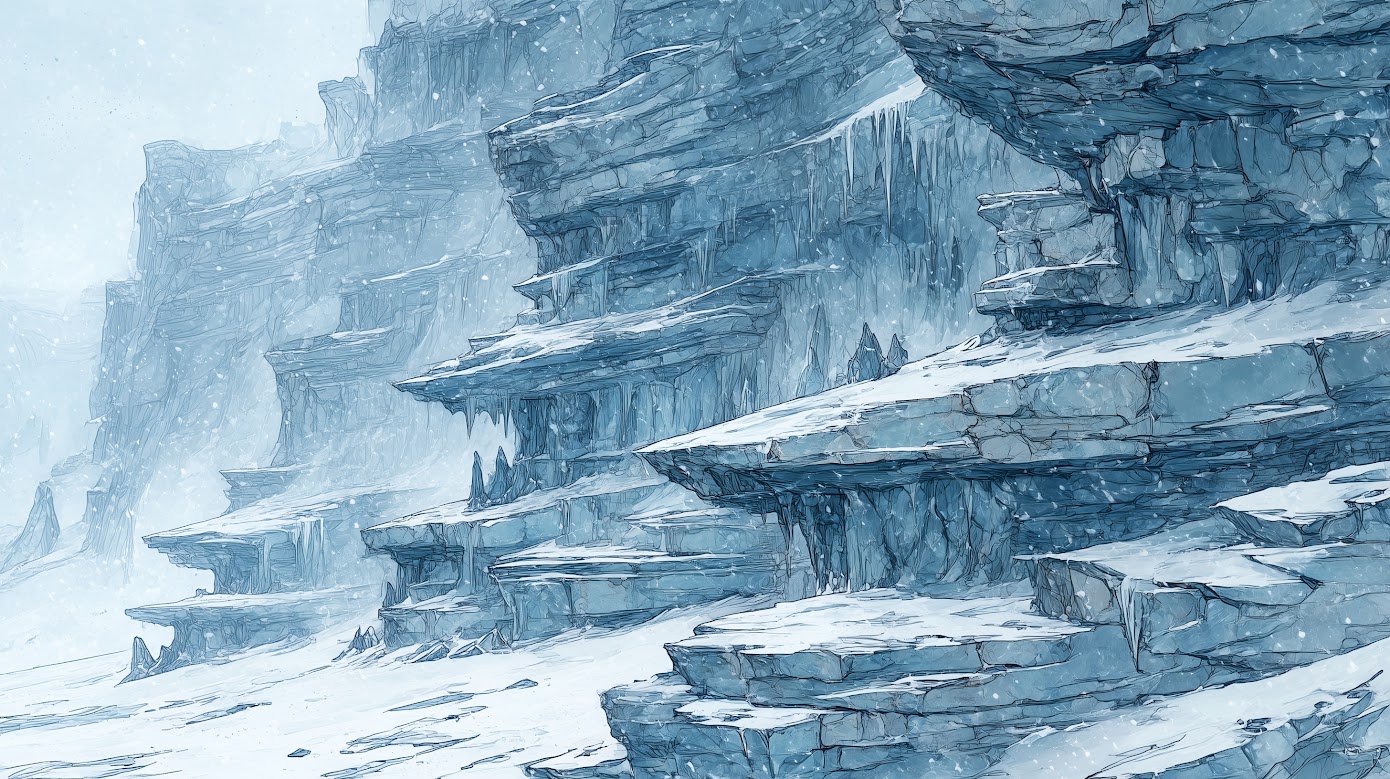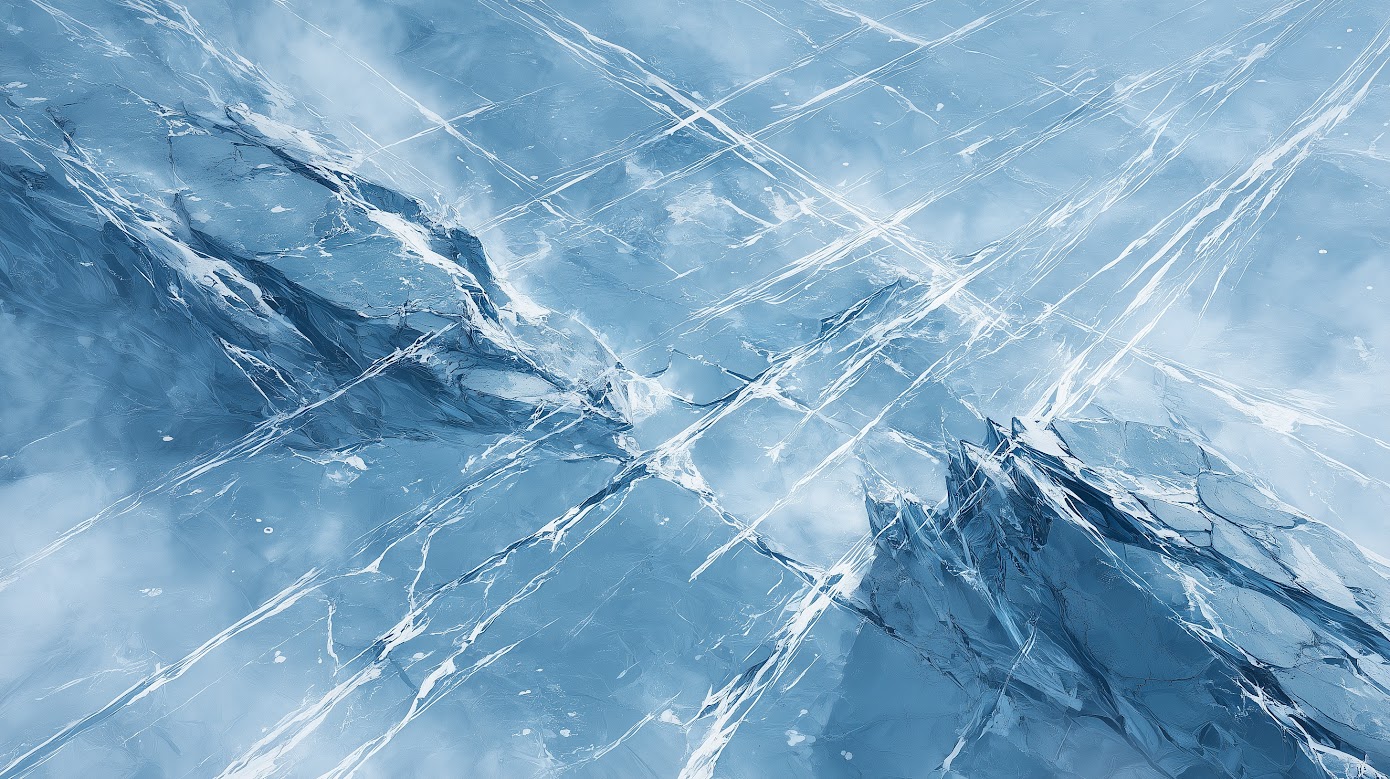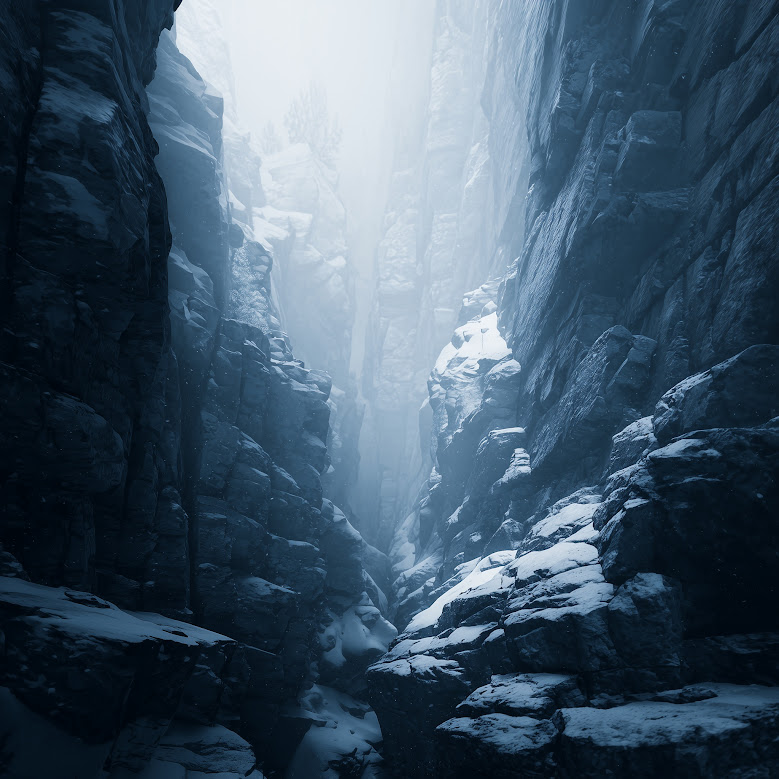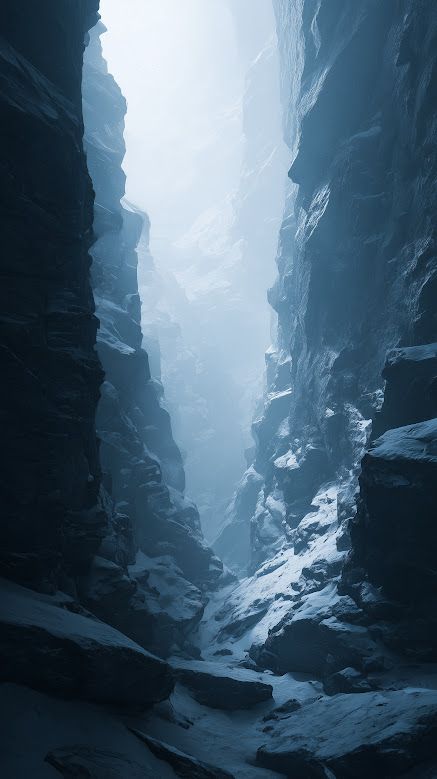Stone Choir
A Song For Those Brave Enough To Listen
“It sounded like stone grieving.”
It begins when the cold becomes still enough to sing. Deep in winter, when frost has layered the high stone in silent white, the mountains begin to produce a sound not made by wind or water. It is subtle at first, more felt than heard. A long breath against the ribs. A distant hum at the edge of hearing. Then, with no clear source, the music begins.
The tone is harmonic, not melodic. It does not rise or fall. It lingers. Some hear it as voices, others as ringing metal. A few say it is chanting. The sound does not echo. It travels. It weaves through canyons, rises along frozen gullies, and threads itself through trees stripped of their leaves. There is no rhythm. There is only presence.
No one has seen the Stone Choir. There are no visible signs of its origin. No glowing stones. No carved monoliths. No ruined halls that might have once hosted song. But the name has endured because of what people believe they hear. Voices. Layers of them. Not language, but resonance. Not music, but memory shaped into tone.
Hunters moving along the high ridges speak of it without ceremony. They say it comes on the third day after a deep freeze, when the ground stops cracking and the snow grows heavy enough to muffle footsteps. They do not chase it. They do not try to record it. They simply stop and listen. Then they continue on without speaking.
The cause is simple enough to explain. Rock expands and contracts under the grip of buried ice. Deep seams flex in the dark, releasing stress in sudden microfractures. These events produce vibrations. The vibration passes through frozen stone and becomes sound. That is the truth. But it is not the full explanation.
Many believe something older lives inside those fractures. Not a spirit or a creature, but a ritual. Something that was once performed so often and so deeply that it has fused with the stone itself. The Choir is not a song being sung. It is a song that was never allowed to end. It loops beneath the crust of the world, trapped in the breath of winter.
Shepherds who hear it near their encampments say it keeps the wolves away. Vault runners say it is a warning to turn back. Others believe it marks places where something waits to be found. A few drop to one knee when they hear it, pressing their ear to the snow crust, trying to catch a clearer note. No one ever does. The sound resists clarity.
The Stone Choir is not beautiful. It is not haunting. It is not tragic. It is vast. When it passes, the air seems thinner. The ground seems deeper. And for a few moments, it feels as if the mountain is remembering a sound it was never meant to forget.
Manifestation
“It was not a warning. It was not welcome. It was just a presence that had no need to be seen.”
The Choir cannot be seen. There is no change in the air, no shimmer on the ice, no glint along the rock. It comes without warning and leaves without sign. The sky does not cloud. The snow does not shift. The only proof of its presence is the sound itself and the silence that always follows.
The tone is clean but not sharp. It arrives as a vibration felt in the chest or fingertips before the ears catch it. Then it grows. Not louder, but wider. It fills the air like mist. Some hear high notes, like bells struck in deep water. Others hear low sustained chords that seem to ring from within their own bones.
Different locations produce different harmonics. In narrow ravines the sound becomes layered, refracting off the rock in unexpected ways. Along open ridges it moves in straight lines, steady and constant. In glacial tunnels it resonates as a hollow drone that vanishes as soon as light touches the entrance.
The source of the sound cannot be triangulated. It is everywhere and nowhere. Those who attempt to follow it find only frozen stone and drifted snow. There is no mechanism. No pattern. No repetition. The mountain sings only when it chooses and never in the same voice twice.
When two people stand side by side during the Choir they rarely describe the same experience. One may hear a distant call. The other a humming chord. They agree that the sound was there, but not on what it was. This has led some to believe the tone is not broadcast, but drawn out of the listener. The mountain speaks in memory, not volume.
Some animals respond to it. Dogs freeze and whine. Horses shift and pull against reins. Birds take flight without call. But none seem harmed. The effect is temporary. The silence that follows lasts longer. Not because the sound was loud, but because the world seems too quiet once it is gone.
Observers who stay too long in the cold trying to capture the Choir often suffer frostbite or disorientation. The sound encourages stillness. It draws the listener deeper into the quiet. Some describe losing track of time. One man claimed he watched a single icicle fall for ten minutes, convinced it was singing with the stone.
There is no instrument that reproduces the tone. No bell. No horn. No string. Attempts to record it produce static, or worse, nothing at all. Some say the Choir cannot be captured because it is not real. Others say it cannot be captured because it is not meant for us. It belongs to the rock, and the rock has no reason to share.
Localization
“I dropped the axe and stepped away. The rock was ringing under my boots. It felt like I had interrupted something sacred.”
The Stone Choir is heard only in winter, and only at the highest elevations of the Agriss range. It does not appear every season. Years may pass in silence. Then, during a particularly deep freeze, it returns for one night, or two, and is gone again. There is no schedule. Only cold.
It favors places where the stone is thick and riddled with seams. Deep canyons. Ridge faces that have never fully thawed. Narrow cuts between peaks where old ice lies buried in shadow. It never appears near trees or running water. It belongs to stone under strain and snow packed so hard it holds no footprint.
The most consistent reports come from the Blackveil Cleft and the northern slopes above Korran's Edge. These are inhospitable places, rarely traveled except by highland runners or those desperate to cross unseen. The air there is thin and the stone groans under the weight of wind and time. It is in these places that the Choir is most often heard.
Those who work the mountains learn to recognize the signs. A sudden dip in temperature. A stillness in the snowpack. The way tools vibrate slightly when set against the ground. These are the preludes. Then comes the tone. Then the song. Then the silence.
Local villagers speak of it with more reverence than fear. They do not worship it. They do not gather to listen. But they speak more softly when the cold deepens. Children are taught to stop and close their eyes if they hear the sound. Just for a moment. Just long enough to remember.
No marker denotes the Choir’s territory. No shrine. No flag. But there are stretches of land where no one builds. Places where cabins rot untouched and paths are left to vanish beneath snow. These places are not cursed. They are not feared. They are respected. The mountain is allowed to sing alone.
Some scholars have proposed mapping the Choir’s appearances to seismic data. Others have tried to model the harmonic intervals using known rock types. All have failed. The data does not align. The harmonics defy reproduction. The song remains unsolved.
What is certain is that the Stone Choir is not a myth. Too many have heard it. Too many have described the exact same sensation. A sound like voices in the rock. A hum that binds the air together. A note held by the mountain long after the singers have gone.
“Voices in the ice, layered like root and bone. I felt them more than heard them. The mountain did not want me there.”
Type
Natural
“We thought it was wolves. Then we thought it was men. Then we stopped thinking and just listened. It was none of those things.”












Comments